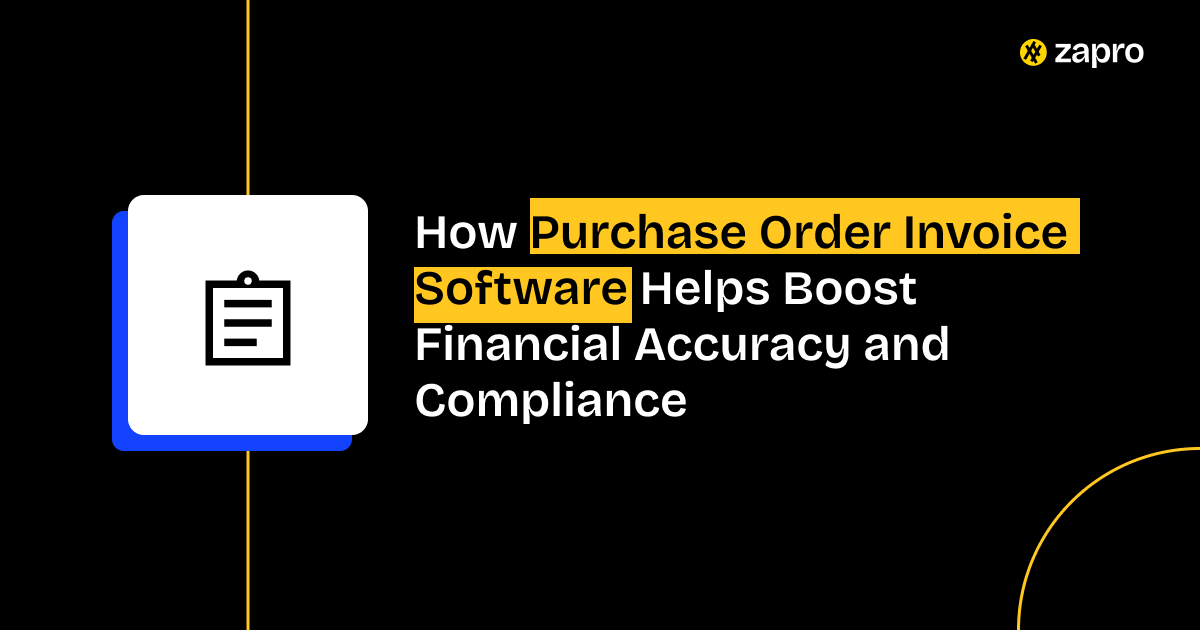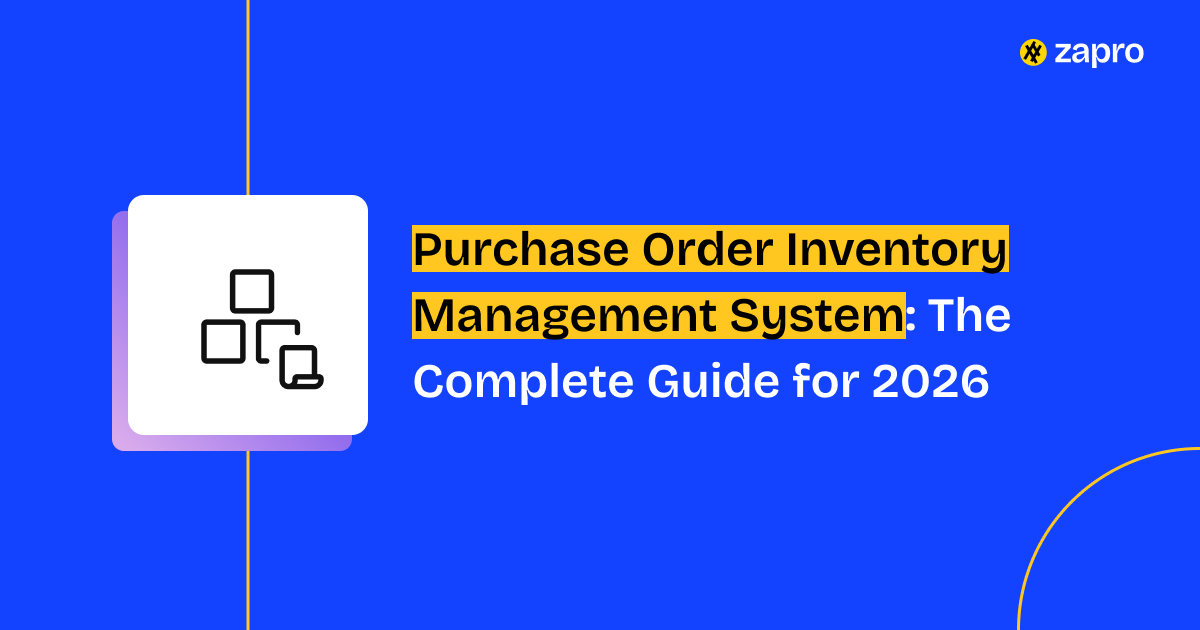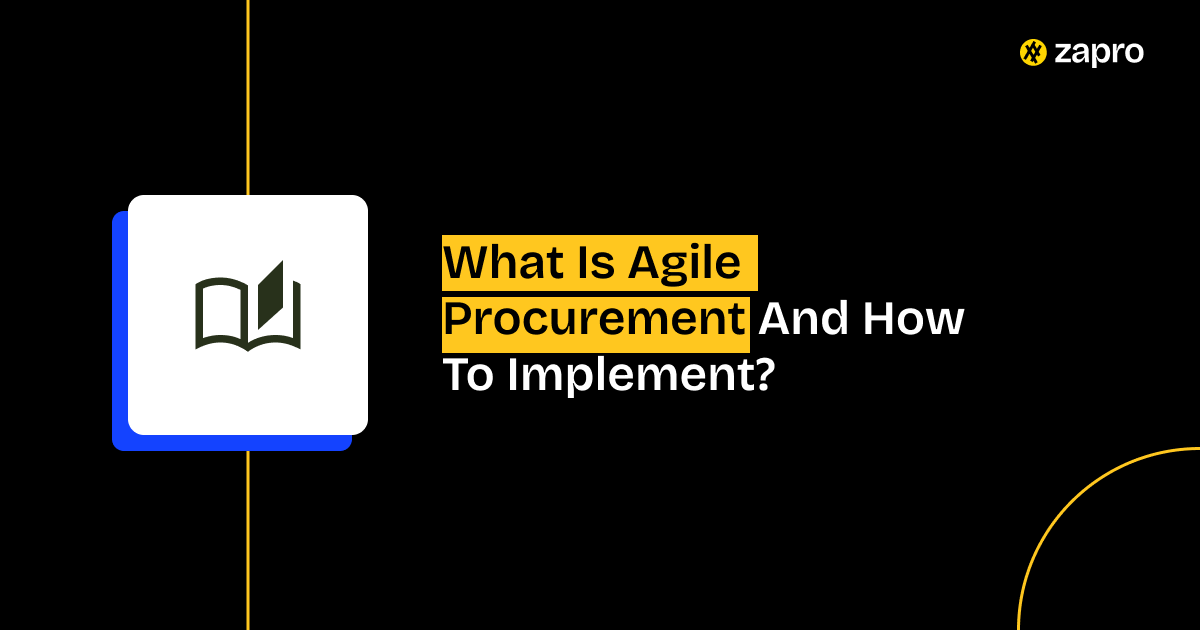Procurement and supply chain management are often used interchangeably, but they’re not the same. While both play a critical role in getting the right products to the right place at the right time, they operate at different levels and serve distinct purposes within an organization.
Procurement focuses on sourcing the goods and services a company needs, negotiating with vendors, managing contracts, and ensuring cost-effective purchasing.
Supply chain management, on the other hand, takes a broader view. It’s about the entire journey: from raw material sourcing, manufacturing, and logistics, to final delivery and even post-sale services.
Confusing the two can lead to misaligned priorities and inefficiencies.
This blog clears up the confusion. We have explained how procurement and supply chain differ, where they overlap, and why understanding both is key to building resilience, cutting costs, and staying competitive.
What is procurement?
Procurement is the process of sourcing and acquiring the goods and services a business needs to operate. This includes everything from finding the right suppliers and negotiating contracts to issuing purchase orders and managing supplier relationships.
But it’s more than just buying. Strategic procurement ensures that purchases align with business goals. It could be things like balancing cost, quality, timelines, and risk. It also involves compliance, sustainability, and supplier performance tracking.
A well-executed procurement process helps organizations:
- Secure high-performing suppliers through structured vendor evaluation
- Mitigate risks by diversifying sources and tracking performance
- Ensure ESG compliance and sustainability in sourcing decisions
- Improve cash flow through better contract terms and demand planning
Whether it’s raw materials, office equipment, or outsourced services, procurement plays a direct role in controlling costs and supporting smooth day-to-day operations.
Learn about risk management end to end procurement.
What is supply chain management?
Supply chain management (SCM) oversees the end-to-end flow of goods, services, and information; right from sourcing raw materials to delivering finished products to customers.
SCM connects multiple disciplines, including:
- Procurement (sourcing and supplier negotiation)
- Production (manufacturing and quality control)
- Inventory management (stock planning and demand forecasting)
- Logistics (transportation and last-mile delivery)
- Returns and reverse logistics (handling post-sale service and product returns)
SCM is all about coordination. It ensures that every link in the chain works in sync to minimize delays, reduce costs, and meet customer demand. That means managing suppliers, forecasting demand, planning inventory, and optimizing transportation.
Learn more about What are supply chain and procurement?
Procurement and supply chain management: What are the similarities?
While procurement and supply chain management have different scopes, they share several key areas of overlap. This is especially true, when it comes to efficiency, collaboration, and risk mitigation.
- Interdependence: Procurement and SCM rely on each other to function effectively. Timely purchasing ensures supply chain continuity, while an efficient supply chain supports smooth procurement management execution.
- Supplier relationships: Both functions involve working closely with external vendors. Maintaining strong supplier partnerships is essential for cost control, consistent quality, and long-term value.
- Focus on cost and value: Both aim to reduce costs without compromising on quality or service. Strategic sourcing and streamlined logistics work together to boost overall profitability.
- Risk management: Procurement and SCM both play a role in identifying and managing supplier risks, disruptions, and compliance issues, especially in global operations.
- Technology-driven: Modern procurement and supply chain teams increasingly use digital tools, like e-procurement software, supply chain visibility platforms, and AI-powered analytics, to drive smarter decisions.

Organizations that integrate procurement and supply chain functions achieve up to 25% greater operational efficiency and 15% higher cost savings compared to those managing them separately.
Differences between procurement and supply chain management
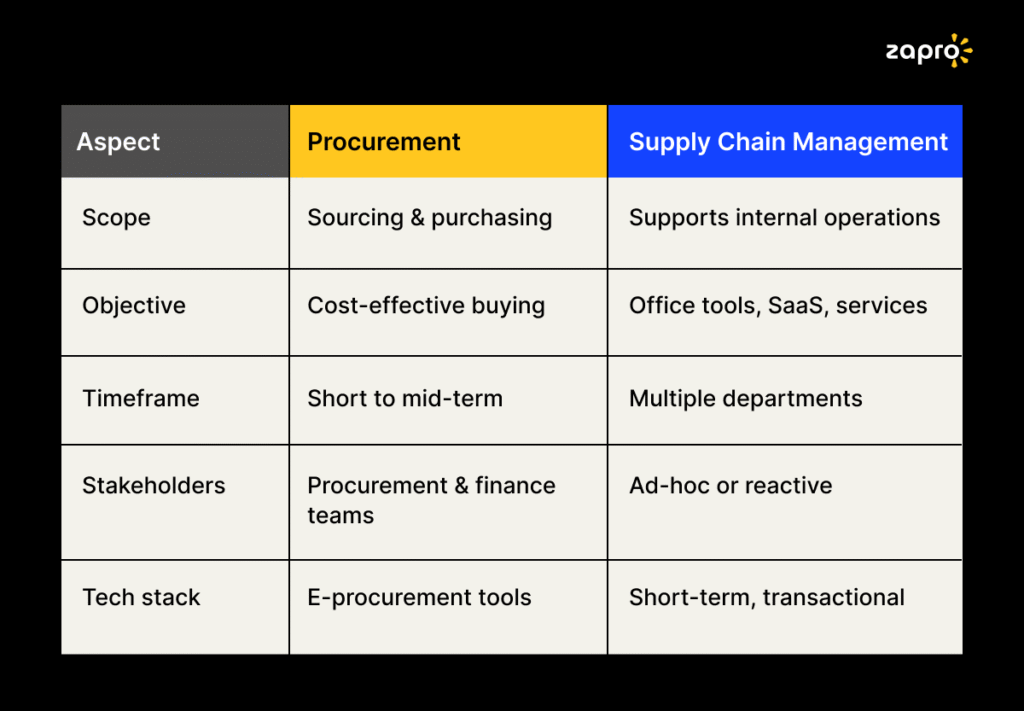
Although procurement is part of the broader supply chain, the two functions serve distinct purposes.
Here’s how they differ across key areas:
1. Scope:
Procurement is primarily concerned with sourcing and purchasing the goods or services a business needs. Supply chain management, on the other hand, covers the entire lifecycle of a product; from sourcing raw materials to delivering finished goods to customers.
2. Primary objective:
The key goal of procurement is to secure the best value through vendor selection, price negotiation, and contract management. SCM focuses on ensuring the smooth, cost-effective movement of goods, services, and information across the entire supply chain.
3. Activities involved:
Procurement involves supplier evaluation, purchase order processing, and managing supplier relationships. SCM encompasses broader tasks such as demand forecasting, production planning, inventory control, logistics, and distribution.
4. Time horizon:
Procurement often operates on a short to mid-term basis, dealing with immediate purchasing needs. SCM takes a longer view, planning for ongoing efficiency and resilience across the full supply network.
5. Interaction level:
Procurement professionals typically work closely with suppliers and internal stakeholders. SCM teams coordinate across departments, procurement, manufacturing, logistics, finance, to ensure all parts of the supply chain align.
6. Metrics focus:
Procurement success is often measured by cost savings, supplier performance, and contract compliance.
In contrast, SCM focuses on metrics like delivery timelines, inventory turnover, supply chain disruptions, and overall customer satisfaction.
Learn about best procurement software.
Bringing procurement and supply chain together with one smarter platform
Knowing how procurement and supply chain management differ is just the start. The real challenge is bridging the gap between the two without relying on disconnected tools, siloed teams, or scattered data.
That’s where Zapro steps in.
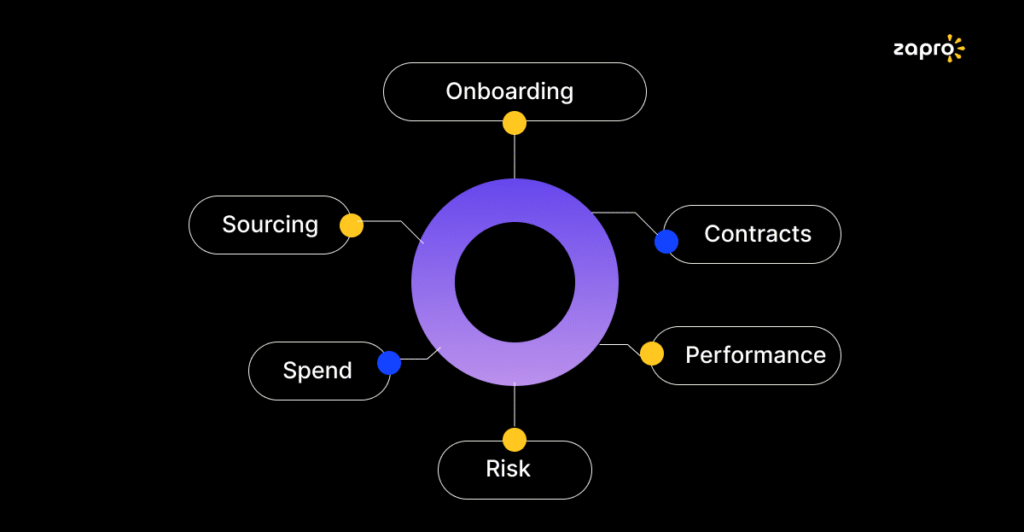
Unlike basic procurement tools, Zapro is a full-spectrum vendor management platform built for modern supply chains. It brings everything, from sourcing, onboarding, compliance, collaboration, to risk tracking, into a single, unified workspace.
Here’s what Zapro replaces:
- Sourcing tools (like Scout RFP)
- Onboarding and due diligence platforms (like Vanta or Prevalent)
- Contract management tools (like Ironclad or DocuSign)
- Internal trackers (spreadsheets, Notion docs, Slack threads)
- Email silos and fragmented communication logs
By centralizing vendor relationships and automating critical workflows, Zapro makes third-party risk tools almost redundant.
Every interaction, every document, and every decision lives in one place with full visibility for procurement, finance, legal, and supply chain teams.
The result?
Lower costs. Fewer risks. Faster decisions. Stronger vendor partnerships. – Get started
If you’re looking to align procurement with the bigger supply chain picture, without the usual chaos, Zapro isn’t just a tool. It’s a smarter way forward.
Unify Procurement & Supply Chain — Boost Efficiency Now!

Don’t miss our weekly updates
We’ll email you 1-3 times per week—and never share your information.

 Healthcare
Healthcare Financial Services
Financial Services Technology
Technology Venture Capitalist
Venture Capitalist Chief Procurement Officer
Chief Procurement Officer Chief Financial Officer
Chief Financial Officer


